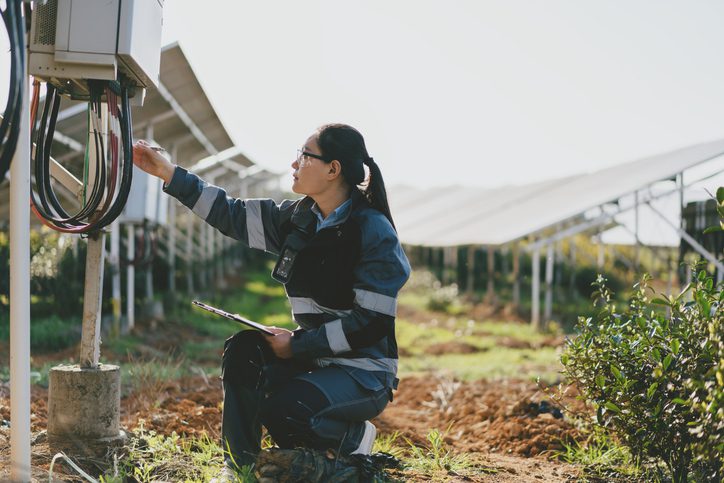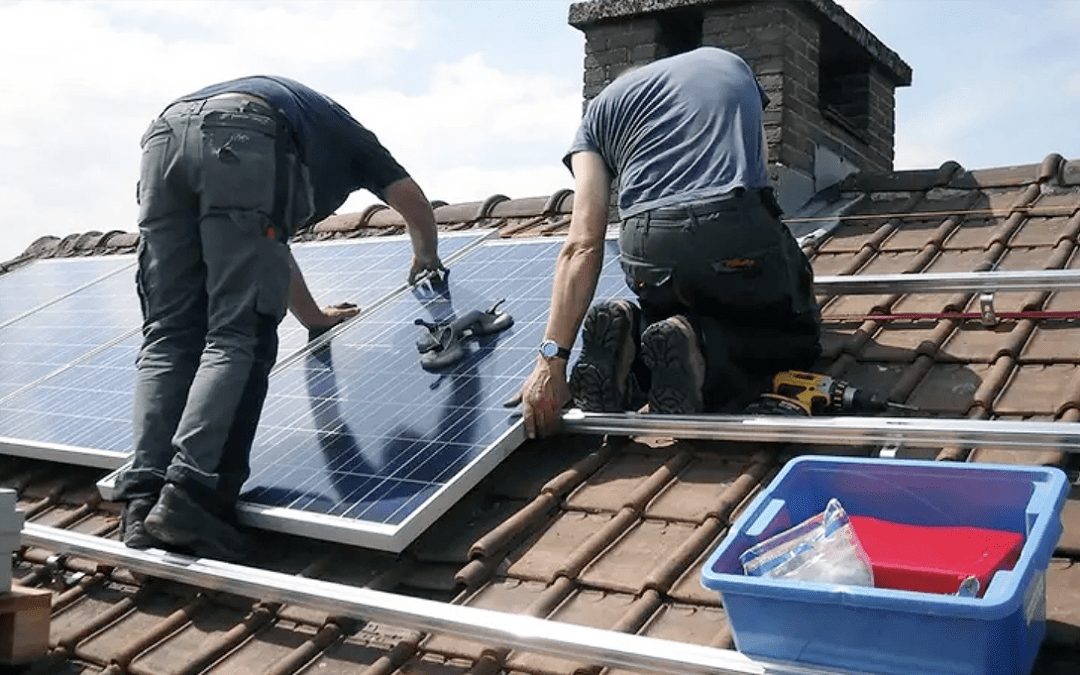More than $150 million in recently announced federal funding will help make solar energy more accessible for low-income and disadvantaged communities in Nevada as part of an effort to boost widespread adoption of clean energy.
Nevada clean energy advocates say that hundreds of millions of dollars in recently-announced federal investments in the state are just the beginning of a “clean energy revolution” that aims to not just improve air quality and reverse climate change effects, but also create jobs and lower energy costs for working-class families.
The Silver State is one of the sunniest states in the nation — with Las Vegas and Reno having sunny days between 80% to 85% of the year, respectively — making it a key region for solar power and clean energy efforts.
“We need to turn that solar into clean energy, good paying jobs, reducing costs for consumers, and helping to save our environment,” Rep. Steven Horsford (D-NV) said in a press conference on Tuesday. “Nevada is becoming a central player in battery and solar manufacturing.”
As of December 2023, Nevada has received over $1.4 billion in funding from the Clean Energy Plan, as part of President Joe Biden’s Inflation Reduction Act, which has spurred $12.2 billion in private investment and helped create nearly 16,000 clean energy jobs in the state.
Most recently, the Nevada Clean Energy Fund (NCEF), the state’s Green Bank, was awarded $156 million last month as part of the Solar for All program to make solar energy more accessible to low-income and disadvantaged communities in Nevada. The program would make financial assistance programs available and accessible to single-family homeowners, affordable housing properties, and residential-serving communities — which would also benefit Nevada’s renters — allowing them to install solar panels.
The NCEF also plans to use the funds to provide education and workforce development opportunities for communities in rural, urban, and Tribal areas statewide.
“That’s money going to communities all across the state to promote drought and climate resiliency, reduce pollution, and advance climate-smart agriculture, and enhance our clean energy economy,” Horsford added. “These projects will provide renewable energy and lead to significant savings on energy bills for households, including renters. I really want to underscore this is not only for homeowners, but it’s for renters as well.”
In total, the US Environmental Protection Agency (EPA) allocated $7 billion for 60 selected applicants to create new or expand existing low-income solar programs, which officials said save low-income households across the country $350 million per year. The funding comes from the Inflation Reduction Act and requires the EPA to award all Solar for All funds by September 2024.
RELATED: On Earth Day, Nevada awarded $218M for solar projects
“This program aims to ensure that there is a transition to a clean, more equitable, and more prosperous future,” said state Sen. Dallas Harris (D-Las Vegas). “This target investment is crucial to ensuring that everyone benefits from the clean energy revolution.”
Clean energy sources like solar and wind are integral to transitioning away from fossil fuels, the key driver of climate change and a major source of pollution that affects the environment and communities’ health.
In 2023, Clark County had 259 days where the Air Quality Index was “moderate” or “unhealthy,” according to an EPA report. And while Nevada is in the “good” range of the EPA’s Air Quality Index overall report, the American Lung Association gave its urban areas “F” grades for ozone and particulate matter.
The NCEF has yet to establish a timeline or process for how Nevadans can apply for the funds, and its educational outreach efforts have also yet to begin.
For the Environmental Defense Fund, a nonprofit, the Solar for All funding is part of a bigger, long-term effort and goal.
“We’re not going to see changes, necessarily, overnight,” said Ben Bryce, a senior manager for state affairs at the Environmental Defense Fund for the southwest region. “These kinds of investments set us up for long term change … We’re not going to understand how important the Clean Energy Plan was, for years down the road, and we’re going to look back and we’re going to say, ‘Our air is cleaner, our communities are safer, they’re more resilient and our people are healthier.’”

Nevada doesn’t have any rules to protect workers from extreme heat. That could change soon.
Approximately 307 people died in Southern Nevada last year due to heat-related injuries, experts told a panel of lawmakers earlier this month. ...

Sen. Cortez Masto’s bill to help restore Lake Tahoe passes Senate
If signed into law by President Joe Biden, the bill would authorize federal officials to use $350 million in unallocated funds for Tahoe restoration...

Biden-Harris administration proposes first-of-its-kind heat protections for workers
The proposal comes weeks after an intense heat wave enveloped much of the southwest, including Southern Nevada, where temperatures in June...

Buscan crear conciencia sobre la crisis que enfrentan diferentes especies de polinizadores
Una resolución bipartidista destaca la importancia de las abejas, los murciélagos y las mariposas durante la “Semana de los Polinizadores”. Una...

CEO: New Clark County solar parts facility wouldn’t have been possible without Biden legislation
The opening of Unimacts’ 160,000-square-foot factory in Sloan will help expand Nevada’s presence in the clean energy sector and was only made...

California is building the largest water recycling plant in the US. How will that help Nevada?
The federal government gave $99 million to help build a state-of-the-art water recycling facility planned to open in 2032. Officials hope it will...






